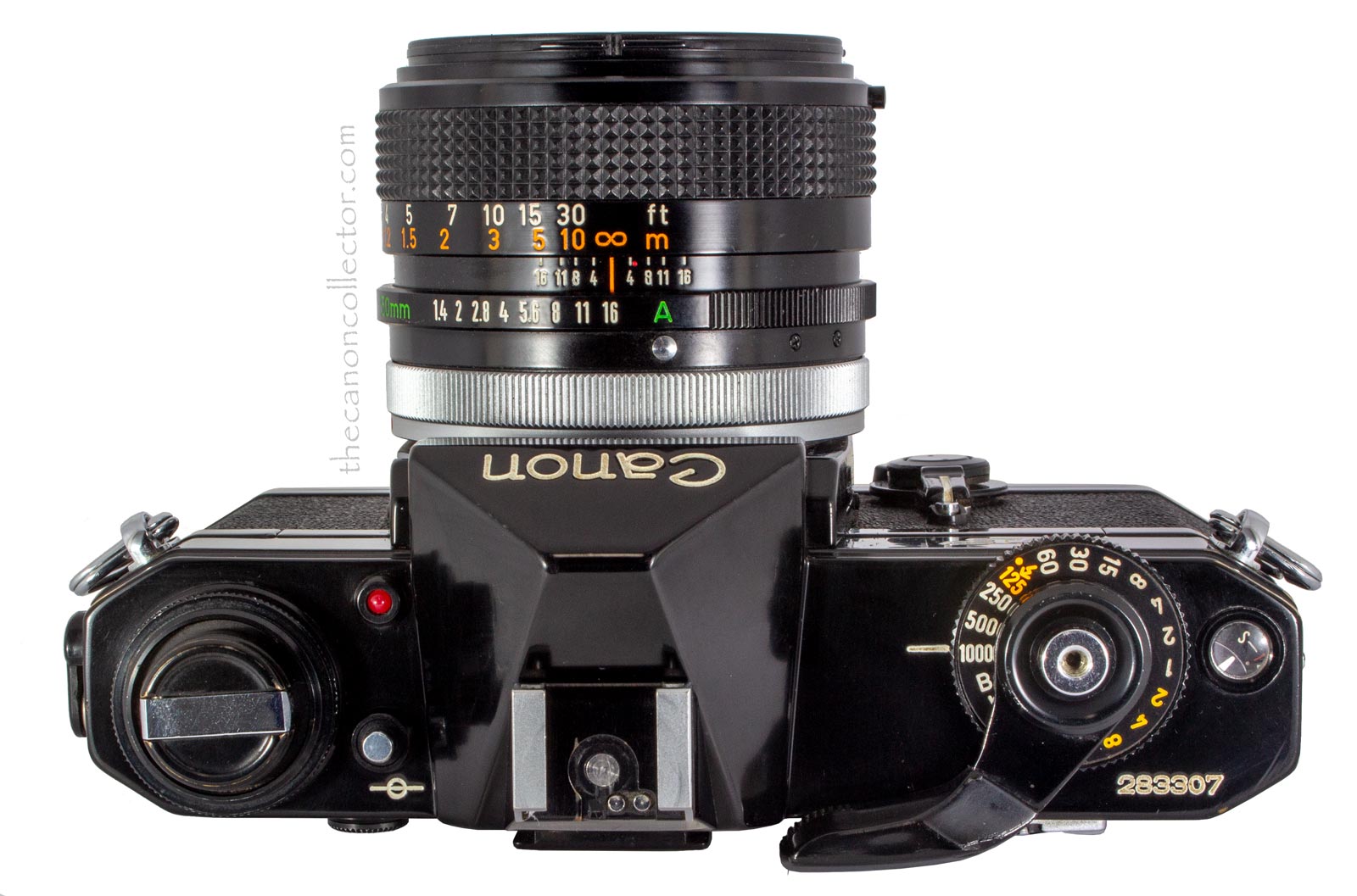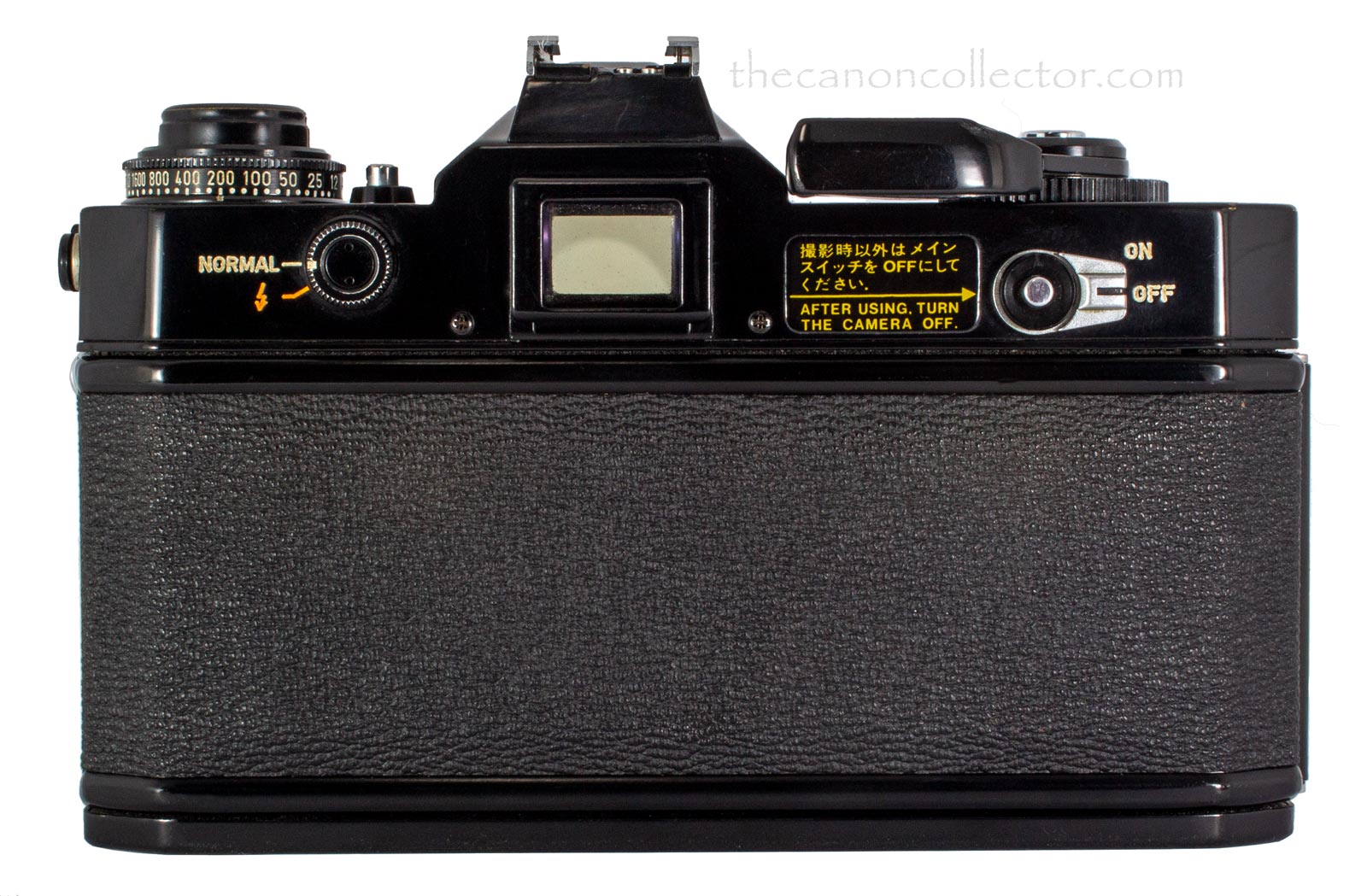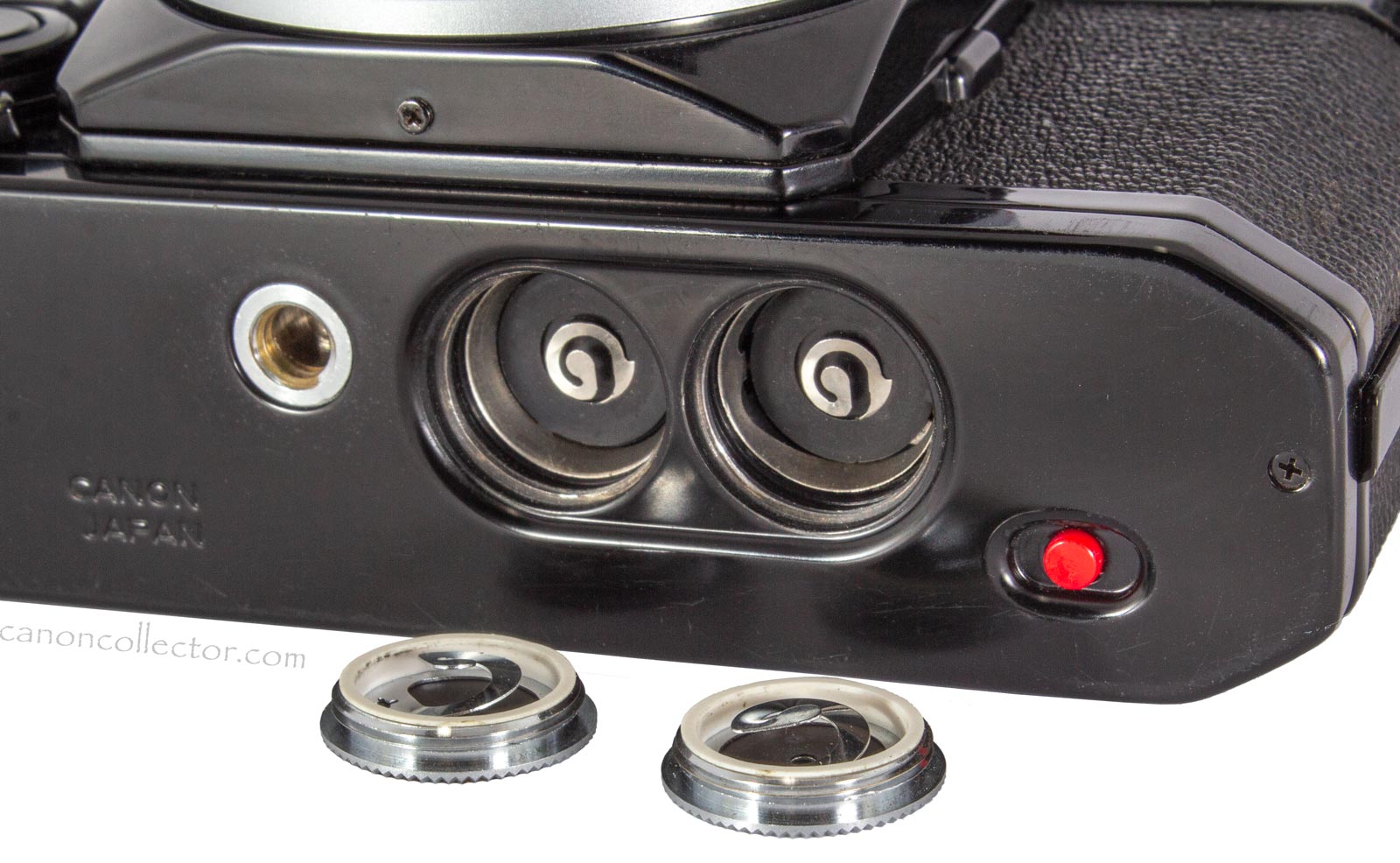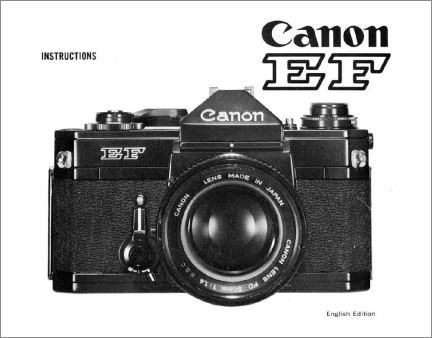The Canon EF
A True Beauty
To my mind the Canon EF Camera is one of the prettiest, if not the absolute prettiest, camera Canon has ever produced. It is up there with the F-1 and the A-1. They were all painted a beautiful lusterous black lacquer with white lettering and they just shone. The fact that they were a really nice camera was an added bonus. And they were interesting from the camera development point of view. So, we have a lot to unpack here. Lets get to it!
The Canon EF was released in November of 1973 according to the online Canon Museum. They were usually paired with an FD 50mm f/1.4 S.S.C. (as shown above) or with an FD 55mm f/1.2 S.S.C.. It remained in production for 4 years.
The layout on top is very traditional. However, the shutter speed dial is placed so it is really easy to set.
The Canon EF camera was an “F” Series camera but it had the first of Canon’s electronic shutters hinting at the “A” Series to come in a few years. To be clear, this camera can be used as a manual camera without a battery installed. But the exposure control required battery power and the shutter speeds from 1 to 30 seconds were electronically controlled. However, Shutter speeds from 1/2 to 1/1000th second were manual.
We have a Newsletter
There is a Newsletter for thecanoncollector.com to keep you up to date on what we are posting. Try it!
Another interesting feature of the shutter was its construction. Canon’s focal plane shutters, until the EOS cameras, were fabric or metal travelling horizontally from right to left. In the EF the shutter had multiple metal blades travelling vertically. The only Canon focal plane shutter to do so prior to the introduction of EOS cameras.
The light meter was based on an SPC (Silicon Photo Cell) photocell, which I do not understand. It was apparently very sensitive when used in conjunction with Canon’s proprietary amplification circuitry. A lot of this I am reading from other sources and will have to study further before I really understand how this worked.
The camera worked in Tv or Shutter Priority mode. Exposure was read at full aperture and sensitivity was center weighted.
Film speed setting was on a dial located around the rewind crank spindle and could be set to any ISO from 12 to 3200 which pretty well covered any film available at the time.
There were two minor versions of the Canon EF camera. It involved the viewfinder. All serial numbers below about 330000 had a ground glass screen with a central circle of microprisms. Over 330000 and the ground glass had a split image in the center which I greatly prefer with my old eyes. View screens were not user changeable.
While discussing the viewfinder, the shutter speed selected was displayed across the bottom of the viewfinder screen and down the right side was displayed the correct aperture. It is a very useful display, although not illuminated and so very dim in low light.
The light meter and slow shutter speed circuitry are powerd by two 625 1.35 volt mercury cells which are of course now illegal as the mercury is very toxic.
The camera has a hotshoe for flash unit and it has two connections for the rudimentary auto flashes then available. Strobe light sync was at 1/125th second which was pretty good at the time.
The back of the camera has two switches. The one on the left is for the flash. And on the right is the on-off switch which you have to use regardless of batteries.
The EF takes two 625 mercury cells to power the light meter and slow shutter speeds. The red button on the right is the battery check button.
Inside the camera you will notice the shutter is a series of metal blades that travel vertically. The other thing to notice is that the Quick Loading device is omitted and loading film has reverted to the older style.
The Canon EF User Instructions
When we open the back of the camera there are a few things to notice. Firstly, there is no QL (Quick Load) device on the film take-up reel. This means that film loading is a little more tricky but I have to say that the take-up spool is better designed than in the one in the Model 7, 7z and FX. But the QL system on the Canon FT works so well I wonder they left it out?
Rather than repeat all of the operating instructions that are laid out in the User Manual I suggest you read that for yourself. I find that even knowing how these cameras work, it is still useful to read the manual before you take the camera out to use it. So I recommend the User Manual to you.
Conclusion
There is no point taking the camera out for a walk and posting pictures here because that is the test of a lens
and not the camera. But there are a couple of comments about the camera I want to make.
I have already said that I think the Canon EF camera is beautiful. And, like all of the “F” Series cameras, it has a solid feel when you hold it. It feels like a precision machine.
Even if the light meters on these old cameras work, I don’t trust them. Not only do meters stop working, but their accuracy can wander and although the meter works it may not give accurate readings. I always use my hand held digital Sekonic meter.
We can use the EF without any batteries at all. The shutter only requires power for speeds over 1/2 second where we seldom venture. When was the last time you used a 5 second exposure?
But, we have to discuss the on-off switch. Like most cameras that use batteries, the EF has an on-off switch on the back under the film advance lever. Even using the camera without batteries you have to use the on-off switch because it also locks the shutter button. You still have to turn the camera on even without batteries.
And that is the Canon EF camera. For me, the F1 and the EF are the go to cameras in the “F” Series.
This website is the work of R. Flynn Marr who is solely responsible for its contents which are subject to his claim of copyright. User Manuals, Brochures and Advertising Materials of Canon and other manufacturers available on this site are subject to the copyright claims and are the property of Canon and other manufacturers and they are offered here for personal use only.







